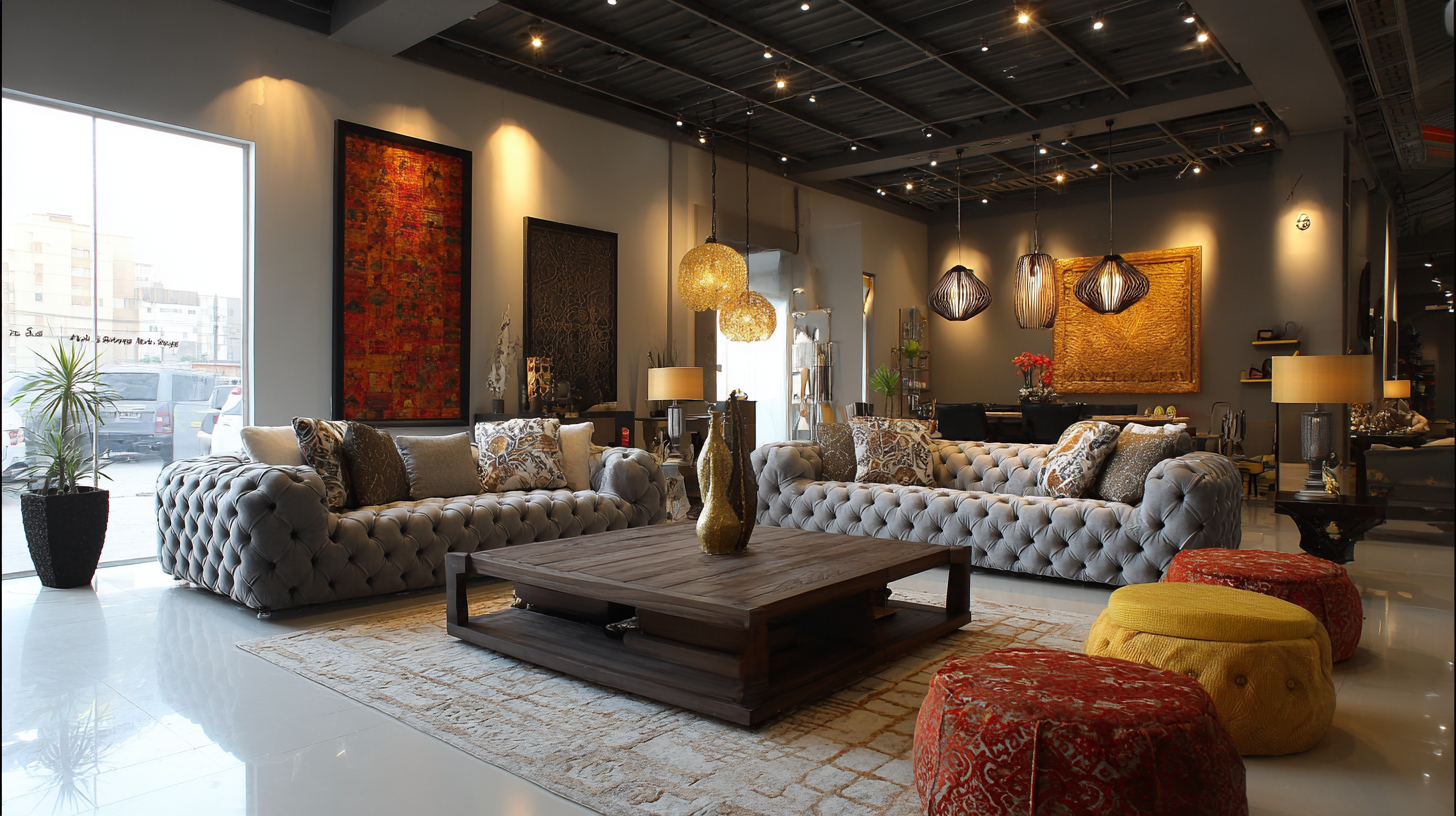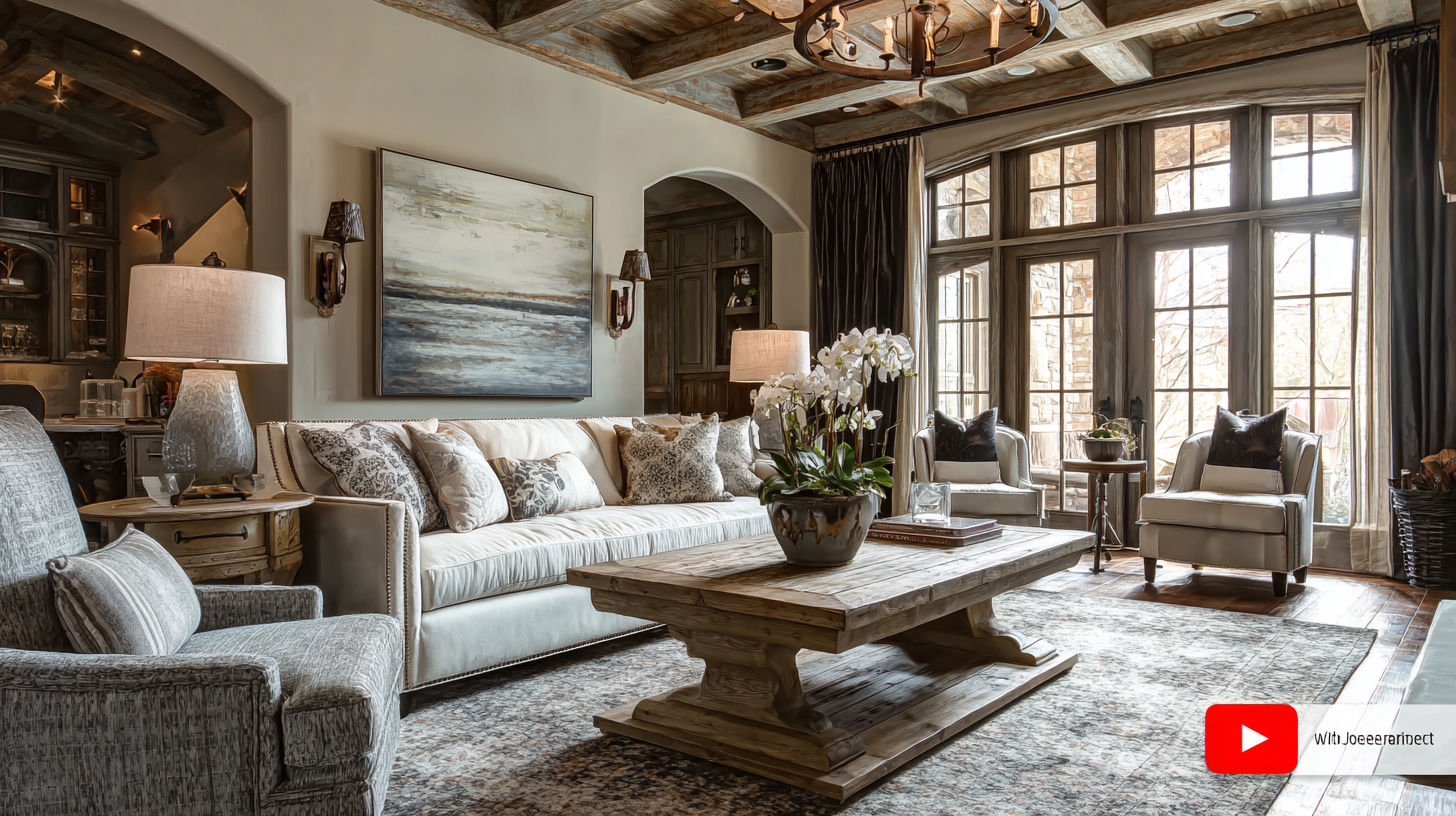How to Choose Best Interior Design Furniture with Exceptional After Sales Support and Low Maintenance Costs
When it comes to creating a captivating living space, choosing the right interior design furniture is crucial. Not only does it set the tone for your home, but it also reflects your personal style and enhances functionality. However, the search for the perfect pieces can often be overwhelming, especially with countless options available in the market. To simplify this process, it's essential to consider not only the aesthetic appeal and comfort of the furniture but also its after-sales support and maintenance costs. This blog aims to provide you with valuable tips and insights on selecting interior design furniture that combines beauty with practicality, ensuring that your investment remains worthwhile in the long run. By focusing on key factors such as durability, warranty, and ease of care, you will be better equipped to make informed decisions that enrich your home environment while ensuring a hassle-free experience.

Understanding the Importance of After Sales Support in Interior Furniture Selection
 When selecting interior design furniture, one crucial aspect often overlooked is the importance of after-sales support. The luxury furniture market is rapidly expanding, with projections showing significant growth in the coming years. As consumers invest in high-quality pieces, understanding the level of support offered post-purchase becomes essential. After-sales service can impact customer satisfaction and determine whether a purchase is truly worth the investment. A brand that provides strong after-sales support will ensure that any issues with the furniture are addressed promptly and effectively. This includes assistance with assembly, warranty claims, and repair services, allowing homeowners to enjoy their new décor without unnecessary stress.
When selecting interior design furniture, one crucial aspect often overlooked is the importance of after-sales support. The luxury furniture market is rapidly expanding, with projections showing significant growth in the coming years. As consumers invest in high-quality pieces, understanding the level of support offered post-purchase becomes essential. After-sales service can impact customer satisfaction and determine whether a purchase is truly worth the investment. A brand that provides strong after-sales support will ensure that any issues with the furniture are addressed promptly and effectively. This includes assistance with assembly, warranty claims, and repair services, allowing homeowners to enjoy their new décor without unnecessary stress.
Additionally, choosing furniture with low maintenance costs contributes significantly to the overall value of your investment. Furniture that requires minimal upkeep not only saves time and money but also enhances the longevity of the pieces, allowing them to maintain their aesthetic appeal over time. When considering potential purchases, consumers should inquire about the materials and finishes used, ensuring they align with their lifestyle and maintenance capabilities. Ultimately, the combination of excellent after-sales support and low maintenance requirements creates a more satisfying and practical furniture investment, reinforcing the idea that thoughtful selection can elevate the home environment.
Evaluating Low Maintenance Costs for Long-Term Savings in Home Furnishings
When selecting interior design furniture, one critical aspect to consider is the long-term maintenance costs associated with each piece. Investing in low-maintenance furniture not only enhances the aesthetic appeal of your home but also translates to significant savings over time. Materials such as synthetic fibers, high-quality plastics, and treated woods can withstand wear and tear better than their natural counterparts. This durability means fewer repairs and replacements, which is a win for both your wallet and your peace of mind.

Additionally, choosing furniture designed for easy cleaning can save you both time and effort. For instance, upholstered pieces with removable, washable covers can be a game changer for households with pets or children. Easy-to-clean surfaces reduce the need for costly professional maintenance services and keep your home looking pristine with minimal hassle. By prioritizing low-maintenance options, you create a functional living space that allows you to enjoy your furnishings without the constant worry of upkeep.
Exploring Trends: How Global Manufacturing Influences Chinese Furniture Quality
When considering furniture for interior design, it's essential to recognize how global manufacturing trends impact the quality of Chinese furniture. With the rise of international collaborations and advanced technologies, Chinese manufacturers have significantly improved their production techniques. This evolution not only enhances the durability and aesthetics of furniture but also aligns with global standards, making it an attractive choice for consumers seeking style and reliability.
**Tip 1:** Look for brands that highlight their partnerships with global manufacturing firms. These collaborations often mean better quality materials and craftsmanship, ensuring your furniture stands the test of time.
Additionally, the emphasis on sustainability in global manufacturing is influencing Chinese furniture production. Many manufacturers are now focusing on eco-friendly materials and practices, catering to a growing market of environmentally conscious consumers. This trend not only benefits the planet but also offers low maintenance options, making your choices easier to care for.
**Tip 2:** When selecting furniture, inquire about the materials used and their environmental impact. Opting for certified sustainable pieces can provide you with a sense of satisfaction and peace of mind regarding your purchases.
Key Statistics Highlighting Consumer Preferences for Durable and Supportive Furniture
The interior design furniture market is rapidly evolving, with increasing consumer preferences for durable and supportive options. Key statistics indicate that the home improvement industry is set to grow from $467.58 billion in 2023 to $664.6 billion by 2032, reflecting a robust compound annual growth rate of approximately 3.98%. This growth highlights the importance of selecting furniture that not only meets aesthetic desires but also provides lasting value through exceptional after-sales support and low maintenance costs.
The market segmentation reveals fascinating insights across various product categories, including home textiles, flooring, and furniture. Notably, consumer demand is shifting towards online channels for purchasing, driven by convenience and accessibility. Regions such as the Asia-Pacific stand out as hotspots for growth, particularly as outdoor furniture sectors gain traction in the wake of recovering tourism. As consumers increasingly prioritize longevity and maintenance efficiency, the focus on sturdy materials and reliable support systems becomes crucial in guiding consumer choices in the ever-competitive interior design landscape.
Maximizing Design Efficiency: Balancing Aesthetics with Practicality in Furniture Choices
When choosing the best interior design furniture, the balance between aesthetics and practicality is crucial. A recent industry report indicates that the market for multifunctional furniture has seen growth rates of over 12% annually, driven by consumer demand for modern design that incorporates comfort and intelligent technology. This trend highlights the importance of selecting pieces that serve dual purposes—such as sofas that convert into beds or modular shelving that can be adjusted to fit various spaces—thereby maximizing design efficiency.
Moreover, low maintenance costs are increasingly becoming a priority for homeowners. Data suggests that furniture made from high-quality, durable materials not only reduces upkeep costs but also prolongs the lifespan of the products. By focusing on designs that merge contemporary aesthetics with long-lasting functionality, consumers can enjoy the fine line between luxury and practicality. For instance, modern minimalist furniture often incorporates traditional craftsmanship that not only elevates beauty but also enhances structural integrity, meeting the evolving preferences of today’s design-savvy individuals.

